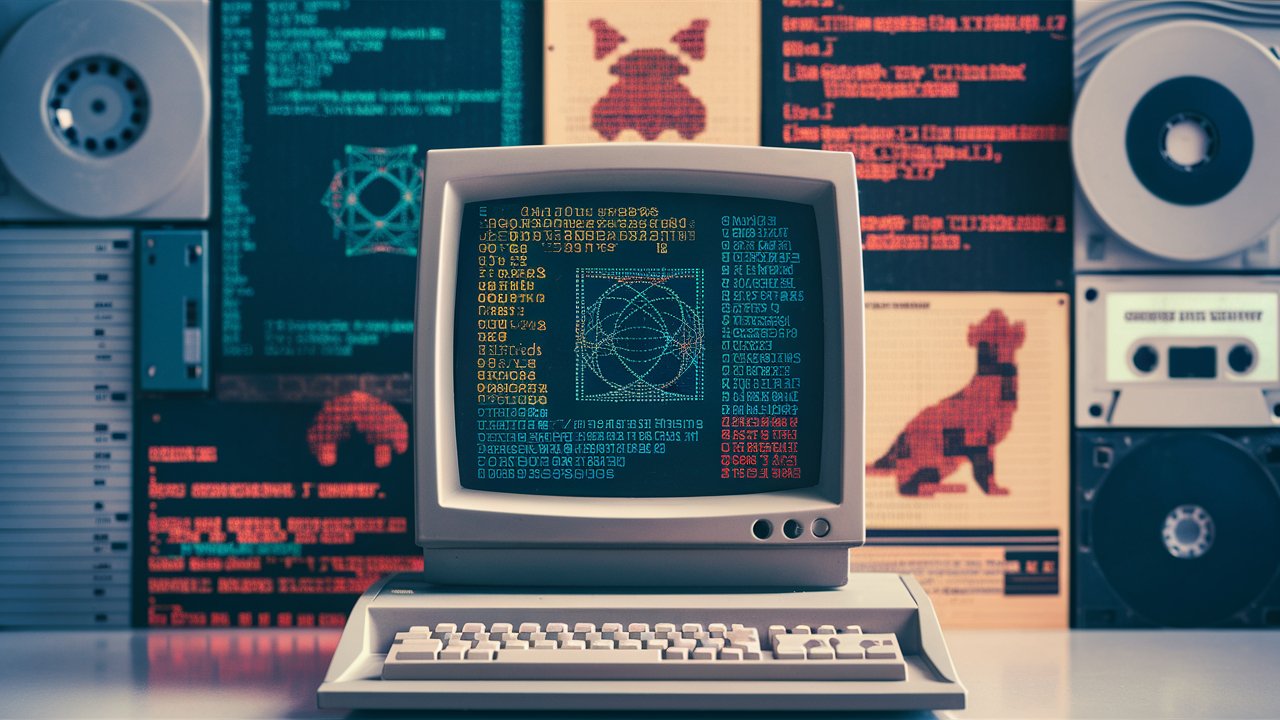Asciiç, or ASCII (American Standard Code for Information Interchange), was created in the early 1960s as a means of streamlining the text representation in computers. This marked a significant advance in computing by enabling diverse systems to receive information seamlessly. Today, it is still a crucial player while evolving to meet modern technology demands.
Understanding Asciiç
When it comes down to its core, ASCII utilizes 7-bit binary numbers to denote 128 characters ranging from letters, digits, punctuation marks all the way down to control characters. Such limited set made it possible for primitive computers to work with basic texts. Notwithstanding all the different coding methods that have developed over time due to improvements in computer science (which have made them more expansive), so far comprehension of Asciiç is a must if one wants to understand how data are processed and displayed correctly.
Decoding ASCII is an easy process as each character has a numerical value according to the standard. These binary values are read by computers which then turn them into human-readable texts; so that they may serve as textual functions that are numerous or even infinite thus proving how efficient Asciiç can be in digital communication.
ASCII’s Early Days in Computing
The roots of ASCII can be traced back into telegraphy and early telecommunication systems. The standardization brought about by its development made it possible for machines operate on an equal footing with each other. Therefore, during the years ASCII became popular among both mainframe and personal computer users demonstrating its endurance as well as significance in information technology.
Asciiç changed the way radically how computers communicated when it first appeared. By offering a common code for characters, numbers and control codes; this helped data move from system-to-system without losing any bit of information. This was very important at a time when there were many quickly evolving computers but often speaking different languages.
Breaking Down Asciiç Structure
It is the simplicity of Asciiç that makes it beautiful. Everything from letters and digits to punctuation marks and control characters can be represented using 128 unique codes that make up what we call Asciiç. With its 7-bit format, it provided early computer systems with enough variation for their basic needs thus making it widely used across various platforms.
The Limitations of ASCII The Push for More
While ASCII was revolutionary, it had its limits as well. First and foremost, it couldn’t represent characters from non-English languages, a drawback that arose as computing became more globalized. This bottleneck highlighted the need for a more exhaustive character encoding system.
Asciiç Finite Character Set
With only 128 possible characters, Asciiç could not adequately display all the letters, signs, numbers and language-specific punctuation marks found in languages worldwide. This inadequacy became even more evident with the growth of the internet that connected people speaking different tongues.
The Search for a Universal Solution
The need for a more inclusive encoding system emerged. Developers and linguistic experts tried to create one unified standard capable of encompassing any character regardless of whether it was used in Afrikaans or Zulu.
The Evolution to Unicode
The Unicode Consortium was formed due to the need for an international character set which could serve all people in all locales. Unicode intended that every single character would have its own unique code irrespective of any platform or program used which represented a significant step away from ASCII’s restrictive scope.
How Unicode Works
Unicode, unlike ASCII which is limited to 7-bits, can go up to 32 bits hence providing more than one million unique codes. Such vastness encompasses present and ancient writings along with a variety of symbols, emoticons and control characters hence serving as the standard for global communication.
Transitioning from ASCII to Unicode
The transition from ASCII to Unicode did not take place overnight; it necessitated massive modifications in existing software, databases and communication protocols. Nonetheless, it was evident that Unicode with its rich set of characters became an essential tool for programmers and content-makers worldwide.
How Unicode Changed the Game for Text Representation
Unicode was brought in to cater for a wider spectrum of characters and scripts for various languages across the globe. In relation to this, while ASCII consists only of 128 characters, Unicode counts more than 143000 – thus offering a complete solution towards global text representation system. However the basic part of Unicode includes ASCII ensuring its key components are intact.
Suggested Read: SDMC Webnet: A Comprehensive Guide
Practical Applications of Asciiç and Unicode Today
Today both ASCII and Unicode are critical components of our digital environment. Their utilization is evident from website creation to software engineering.
Web Development and Text Encoding
In the realm of web development, character encoding plays a pivotal role in the accurate representation of texts across different browsers and devices. Unicode is the best character set because it permits any text to be the same on any website, be it simple HTML pages or complicated web applications.
Software Development and Data Storage
Software developers depend on unicode for presenting text in various languages and formats. Moreover, Unicode serves as a unifying factor among distinct platforms in terms of compatibility and consistency; therefore, it is used by databases, text processors, and even operating systems to store and manipulate textual data.
Communication and Social Media
Asciiç has not been completely discarded in modern communication. For example, from ASCII emoticons have come emojis which make digital interactions more colorful and lively than before. Unicode’s rich character library that includes emojis enhances our online chats making them attractive as well as all-encompassing.

The Future of Character Encoding
There is always a need for strong shouldered; multilingual character encoding systems whenever there are changes in technological standards. This implies that new breakthroughs will mainly be linked to emerging technology like artificial intelligence (AI) alongside machine learning in the way we encode and process texts.
AI and Machine Learning
The majority of AI and machine learning processes depend on the text data used to train their models or algorithms. Character encoding is important because it ensures efficient handling of large volumes of texts thus making unicode an integral part of these modern technologies even at this instance.
Beyond Unicode What’s Next?
While Unicode is the current reigning king, in the future there might be other encoding standards which can handle increasing complexity of digital communication. For instance, advancements in quantum computing and artificial intelligence may usher us into an era of even more advanced character encoding systems.
Tips for Developers
Developers and content creators have an advantage when it comes to SEO and user experience by using ASCII or Unicode. Some practical ways to begin:
Optimizing for SEO
Using Unicode would guarantee that your contents are correctly indexed by search engines; this will resultantly improve site visibility as well as ranking. Add some relevant keywords in your text and keep it readable and cohere.
Enhancing User Experience
You can create inclusive contents by making use of Unicode’s extensive palette of characters. Besides, adding special characters, symbols and emojis will make your content interesting and user-friendly.
Ensuring Compatibility
Make sure that all the software applications i.e. online platforms used support Unicode for the sake of consistency when using them in different places at different times. Keep updating systems professionally so as to be at per with latest developments in Unicode.
The Enduring Significance of ASCII
As August 2024 approaches, people have been trained on data only. The journey from ASCII to Unicode has been an interesting aspect of communication and interaction in our digital world. Even though ASCII was a starting point, Unicode has made it possible to communicate globally in an inclusive way that exceeded expectations.
nyone who desires to be a developer or just someone with passion for technology should know about the history and uses of both ASCII and Unicode. These are not merely technical standards for encoding but rather the foundation of the virtual world we live in.
On this note, if you want to delve deeper into this topic look out for online communities or courses dealing with character encoding and digital communication. Therefore harnessing such knowledge will sharpen your skills as well as broaden your view on ever changing tech scene.
Suggested Read: Your Complete Guide to RCN Webmail Login
Frequently Asked Questions (FAQs)
1. What is the main difference between ASCII and Unicode?
ASCII (American Standard Code for Information Interchange) is a character encoding standard that employs 7 bits for character representing limiting its usage to 128 symbols comprising digits, letters and control characters. On the other hand, Unicode encompasses a broader range of characters (over 143,000) across multiple scripts which enables it to support almost all written languages and symbols being used today.
2. Why is Unicode important for global communication?
In this interconnected world of ours , Unicode allows for seamless communication across different languages and scripts. This implies such inclusive code that make sure any user with diverse language backgrounds can easily share and exchange information.
3. How do I ensure my website uses Unicode correctly?
To ensure your site correctly uses Unicode is by setting text encoding to UTF-8 on the HTML document. To do this place the following meta tag into your HTML head section:
“`html
<meta charset=”UTF-8″>
“`
Additionally, ensure that your database, scripts and other text-processing tools are set up for UTF-8 as well, thus enhancing compatibility and access across different devices and platforms.

















